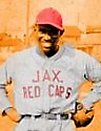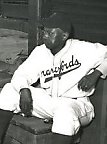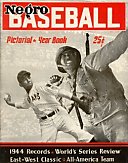One of my more recent fascinations with baseball history is what truly makes the game Americaís pastime Ė that every town has its own story. Whether itís a major league city of millions or an unheard of village of hundreds, thereís baseball history to be found there.
For instance, I grew up in Baltic, Ohio (pop. 748), where the long forgotten Owen Scheetz used to take the local mound before getting a cup of coffee with the Washington Senators during the roster-weakened years of World War II. However, even the larger towns hold their secrets well.
Iím currently reading Richard L. McBaneís A Fine-Looking Lot of Ball-Tossers: The Remarkable Akrons of 1881. While I spend many summer nights watching the Akron Aeros groom their baseball history in the form of future Indians, few people know that some of the greatest stars of the 19th century played just a few blocks away. The local nine that featured Hall of Fame second baseman Bid McPhee, 284-game winner Tony Mullane, and one of the top 100 shortstops in history in Sam Wise, beat some of the best teams in the country in the days when a minor league club could still play against those in the majors.
However, over fifty years later, Akron featured another team that hosted some major league talent. This time very few people knew about it, and, in fact, Iíve never seen anything written on the subject. Thatís because none of these players were ever allowed in Major League Baseball.
Next year will mark the 75th anniversary of the 1933 Akron Tyrites, one of the top independent Negro league teams of their day.
The Tyrites, known also as the Black Tyrites or occasionally the Grays, made their home at League Park in Akron, which I suspect may have been fashioned after League Park in Cleveland. It was located between Carroll, Beaver, Excelsior and E. Market Streets, right about here. If you continue moving the map west, you will find Canal Park, current home of the minor league Akron Aeros.
The Tyrites borrowed their name from the white minor league team that had made their home there for several years while playing in the Central League that had folded for a second time in 1932.
The Negro National League had disbanded during the 1931 season and attempted to reorganize for the 1933 season. One of the new members of the league was the Columbus Blue Birds, but Columbus had finished the first half of the split season in last place of the six team league at 11-18. The team was disbanded and ended up taking Akron with them. That's because Columbus was replaced in the NNL by the Cleveland Giants in August, and most of Cleveland's roster was filled by former Blue Birds and Tyrites. It was a lost cause, though, as the league's second half schedule was never completed.
A half-dozen Tyrites suited up for the Cleveland Giants in August, but this is what Akron's complete roster had looked like earlier that summer, as best I can piece it together:
C - Spoony [Clarence] Palm. B:R. 28.
.jpg)
Palm was one of the six to move on to Cleveland that season, but he had also spent part of the year with the Detroit Stars. He had a mediocre reputation as a backstop, but he was a dangerous free swinger at the plate with good power. Eight years later, after playing primarily for the New York Black Yankees and Philadelphia Stars, Palm was signed by the Homestead Grays. Josh Gibson had left to play in the Mexican League in 1940 and the Grays were desperate at catcher. Unfortunately, Palm was no Gibson and was older than him as well. The Grays found that no one could replace Gibson and brought him back for the 1942 season. Felton Wilson was listed as Akronís reserve catcher.
1B - Alonzo "Fluke" Mitchell. B:R. Prob. early 30's.

Mitchell was best known as a sidearm curveballer, hence his other nickname "Hooks", but he was the everyday first baseman in Akron. I can't find who Akron's manager was, but Mitchell is a possible answer. In 1934 he joined the Jacksonville Red Caps as player/manager and coached his teams for most of the '30s. Alfred Taylor was another first baseman who appeared with Akron, but with Mitchell and possibly Lou Dials ahead of him, it's unlikely that he had much playing time.
2B - Charley Looney
Aside from the Tyrites, the only noteworthy team Looney ever showed up on was the 1938 Louisville Black Colonels, a non-league team of marginal talent.
SS - Townsend Tapley / Swan
Tapley never spent another season with a significant team. He and his brother John were both part-time starters on the left side of Akron's infield. A player by the last name of Swan started part-time, but hit near the bottom of the order.
3B - Bobby Williams. B:R. 37. / John Tapley
Williams, a former shortstop, was one of the most notable members of the Tyrites, having once been the heir apparent to the "Black Honus Wagner" John Henry Lloyd:

In January 1918, Lloyd had a job in the Army Quartermaster's depot in Chicago, and he decided to stay there instead of traveling to Florida to play in the winter league with the American Giants. This appears to have displeased [Manager Rube] Foster, and by early spring the manager was singing the praises of a young shortstop named Bobby Williams, a slick fielder but no fence-buster at the plate.
- Only The Ball Was White. Robert Peterson.
Lloyd never did play for Foster again, and the pint-sized Williams (5'5", 145 lb.) spent nearly a decade as the shortstop for the legendary Chicago American Giants. Williams actually played for each of Columbus, Akron and Cleveland in 1933. Williams is another player with managing experience, having piloted the Pittsburgh Crawfords just the year before, but since Akron must have existed at the time he played in Columbus, he's not likely the answer.
While Tapley was only a part-timer and never seen with a significant team again, he did bat second for Akron when he was in the lineup. Bill Johnson was also listed as part of the crowded situation at the hot corner.
LF - Simpson / ?
Simpson also played some first base and managed to catch on not only with Cleveland that season but also the Baltimore Black Sox. Still, he apparently never managed to get his first name in a game report. From The Biographical Encyclopedia of the Negro Baseball Leagues: "At the beginning of the season he shared the starting assignment in left-field and hit fifth in the batting order with the Akron Tyrites." Who he was sharing the assignment with, I don't know.
CF - Dimes / Joe "Showboat" Ware
Dimes was a light hitter who started part-time, but dropped off the map after the team disbanded. Ware returned to Cleveland with the Giants after having played 2B there in '32 with the Cleveland Stars. He showed up occasionally with Negro League teams through 1936.
RF - Lou Dials (?) B:L. 29.

Dials played the trifecta in '33 with Columbus, Akron and Cleveland. I have nothing placing him in right field, but he mostly played the outfield in addition to some first base, and was likely the best hitter on the club, so the starting job in right seems to be the most likely spot. Between Columbus and Cleveland, he posted a recorded .370 average, which would have given him an unverified NNL batting title.
There was little doubt that Dials had major league talent. In 1943, when the Pacific Coast League still considered itself the West Coastís answer to MLB, the manager of the Los Angeles attempted to sign Dials and fellow Negro Leaguer Chet Brewer to contracts. However, Phil Wrigley, who owned both the Angels and the Chicago Cubs discovered the plan before pen ever touched paper and vetoed the idea.
PITCHING:
Spoon Carter. T:R. 30.

Carter was on the move in '33, having pitched for the Memphis Red Sox and Pittsburgh Crawfords in addition to Akron and Cleveland. He was a control pitcher who threw everything but the kitchen sink. His repertoire of breaking pitches included a knuckler, screwball and curve. Carter's reported birth date in B.E.N.B.L. was Dec. 8, 1902, which would have made him 30 years old when he pitched for Akron, but it was only his second year in the Negro Leagues, and he pitched until 1949. Even if he wasn't 44 yet when the major leagues integrated, he was apparently too old to get a contract.
Willie Powell. T:R. 29.
Powell featured a "darting curveball, a sneaky hopping fastball, a changeup curve, a screwball, and a drop... he also knew how to cut a ball". He started his career promisingly with the powerhouse Chicago American Giants in the mid-'20s, but over the course of one year, he was shot in the face by his father-in-law in a shotgun accident and then developed a sore arm. He recovered to have a solid career, but by 1934 it was over. He lived to be 83, but health problems in his later life led to both legs being amputated and a lame arm. In his early career he was known as Piggy because of his youth and small stature.
Charley Justice. 30.
When Justice resurfaced with the '37 Detroit Stars, he sometimes roamed the outfield.
Willie Hunter
Never appeared with another team of significance.
Woody Williams. T:L.
After an "undistinguished appearance" with Akron, he showed up again with a few teams in the late '30s and early '40s.
*Any quoted text or statistical information without a cited source was gathered from James A. Rileyís ďThe Biographical Encyclopedia of the Negro Baseball LeaguesĒ.
Comments
Add a comment (You must be logged in)
Yannigan is an old multipurpose baseball term that's gone out of vogue. It was used to refer to a rookie before there were "rookies," but it was also stuck to those whose talent left something to be desired. Seemed about right... these stories aren't about "The Called Shot" or "Merkle's Boner," they're about the lesser known tales of baseball - the stories that, hopefully, you find interesting, maybe even educational, but they won't be the rehash of the stars we already know.
March 31, 2011
March 30, 2011
June 16, 2008
April 15, 2008
April 8, 2008
Beautiful colorization attempt for Willie Mays' catch
Kei Igawa
Ichiro Suzuki
Immigrant Misappropriations: The Importance of Ichiro
Harmon Killebrew
1985: Harmon tries to hit one across the Mississippi
Rick Honeycutt
Rick Honeycutt took time to encourage sick boy: Tribe memories
George Strickland
Fans Are So Obsessed With Them
A Simpler And More Ordered Place
A Simpler And More Ordered Place
A Simpler And More Ordered Place
The 1945 All-Star Game at Fenway Park was canceled due to wartime travel restrictions.
